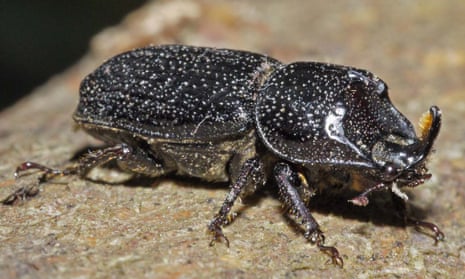David Elliston Allen, chronicler of naturalists in Britain, once described the natural history field club, a Victorian invention popular for its self improvement ethos and convivial excursions into the countryside, as a masterpiece of social mechanics.
Perhaps future generations might take a similar view of today’s expanding community of naturalists linked via the web, digital photography and social media, forming virtual field clubs.
It has never been easier for anyone with the slightest interest in wildlife to find help identifying discoveries then sharing them with others. Recently my wife found an unfamiliar black beetle on the log pile in our garden, so I uploaded a photograph to iSpot, the excellent Open University website where volunteer experts help other naturalists to put names to their discoveries.
Within a few days Darren Mann, a coleopterist at Oxford University Museum of Natural History, confirmed that we had found a rhinoceros beetle, Sinodendron cylindricum.
The beetle was a female, without the impressive head appendage that gives the species its common name. We started looking for a male and soon found one, although at the time we had no idea what it was because it had been crawling under the peeling bark of a tree and its head was shrouded in spiders’ webs it was struggling to remove.
I brought it home and removed the sticky threads with tweezers, revealing its spectacular curved “rhino” horn tipped with a brush of golden hairs and mounted on a head armoured like that of a Triceratops dinosaur.
We watched it take lumbering steps across our kitchen table like some prehistoric monster, albeit no larger than my thumbnail, then released it into the log pile in the garden to find the female.
We will enjoy sharing the discovery on Twitter and a blog, but that digital dialogue will never quite match the excitement I’ve felt when I’ve tugged on a fellow naturalist’s sleeve during real field excursions, opened a matchbox and revealed the beetles I’ve found.
Phil Gates @seymourdaily

Comments (…)
Sign in or create your Guardian account to join the discussion